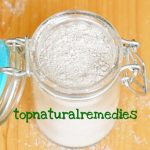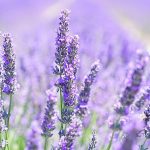Peony – Therapeutic Effects on the Brain
Peony is one of the most beautiful flowers one can lay eyes on, but it is also a very powerful medicinal herb, having been traditionally used as a sedative, antispasmodic, astringent and emmenagogue. The common peony (Paeonia officinalis) is used mostly as a sedative and antispasmodic, while the wild peony (Paeonia peregrina) is used for its astringent and emmenagogue properties. The medicinal properties of the common peony are due mostly to the content of paeonol, which is also abundant in the mountain peony (Paeonia suffruticosa), while another significant substance, paeoniflorin, is usually extracted from the Chinese peony (Paeonia lactiflora). Out of the many therapeutic effects that these two substances exert, we will focus now on those that target the brain or the nervous system in general.

Contents
Scientific studies
Paeonol
- Stroke, traumatic injury, Parkinson’s disease, Alzheimer’s disease: The results of a study published in Shock in 2012 suggest that “paeonolmight be a potential neuroprotective agent via inhibiting microglia-mediated inflammation and oxidative stress-induced neuronal damage”, both of these mechanisms playing important roles in the pathogenesis of neurodegenerative disorders such as the ones mentioned above.
- Anti-aging: A study on the effect of reducing oxidative stress, cognitive impairment and neurotoxicity in d-galactose-induced aging mice, published in Journal of the Neurological Sciences in 2009 demonstrated that “paeonol possesses anti-aging efficacy and may have potential in treatment of neurodegenerative diseases.”
- Neuroprotective against oxygen-glucose deprivation-induced injuries: A study on cultured rat hippocampal neurons demonstrated this effect of paeonin. The results were published in Journal of the Neurological Sciences in 2008.
- Diabetic encephalopathy: A study published in Neuroscience Letters in 2013 suggest that “paeonol might act as a beneficial agent for the prevention and treatment of diabetic encephalopathy.”
Paeoniflorin
- Antidepressant: The results of a study published in Neuroscience Letters in 2013 suggest that “the modulation of the hypothalamic-pituitary-adrenal axis and up-regulation of serotonergic and noradrenergic systems are important mechanisms underlying the antidepressant-like effects of paeoniflorin in chronic unpredictable stress-treated rats.”
- Stroke: A study published in British Journal of Pharmacology in 2005 demonstrated the neuroprotective effect of paeoniflorin on cerebral ischemic rat by activating adenosine A1 receptor and thus suggested that it “might have the potential therapeutic value as an anti-stroke drug.”
- Chronic brain ischemia: a study published in Brain Research in 2006 demonstrated that paeoniflorin “could attenuate cognitive deficit and brain damage induced by chronic cerebral hypoperfusion.”
- Parkinson’s disease: The same mechanism, of activating the adenosine A1 receptor, seems to be responsible for paeoniflorin’s beneficial effect of attenuating neuroinflammation and dopaminergic neurodegeneration characteristic to Parkinson’s disease. The study that demonstrated this was published in British Journal of Pharmacology in 2006.
- Neuroprotective against corticosterone-induced injuries: This effect of paeoniflorin was revealed by two studies published in Zhongguo Zhong Yao Za Zhi in 2010.
Preparation and administration
- Parts used: from common peony – root, stem, and flowers; from wild peony – flowers; from mountain peony – root bark; and from Chinese peony – root and stem.
- Root and stem tincture: Add 10 g of finely cut roots and stems in 100 ml alcohol 40% and let them macerate for 2 weeks in a cool place, then sift. Take 30-40 drops in a glass of water, 3 times a day, after a meal, for 25-30 days.
- Flower tincture: Add 3 tablespoons of finely cut dried petals in 500 ml of alcohol 40% and let them macerate for 20-30 days, shaking the recipient from time to time. Take 1 teaspoon in a glass of water, 2-3 times a day, before a meal, for no more than 30 days.
Precautions
Peony can be quite toxic. Do not administer to children and never exceed the recommended dosage and duration of treatment. If possible, consult with a specialist before beginning a peony therapy.




Better grow some!